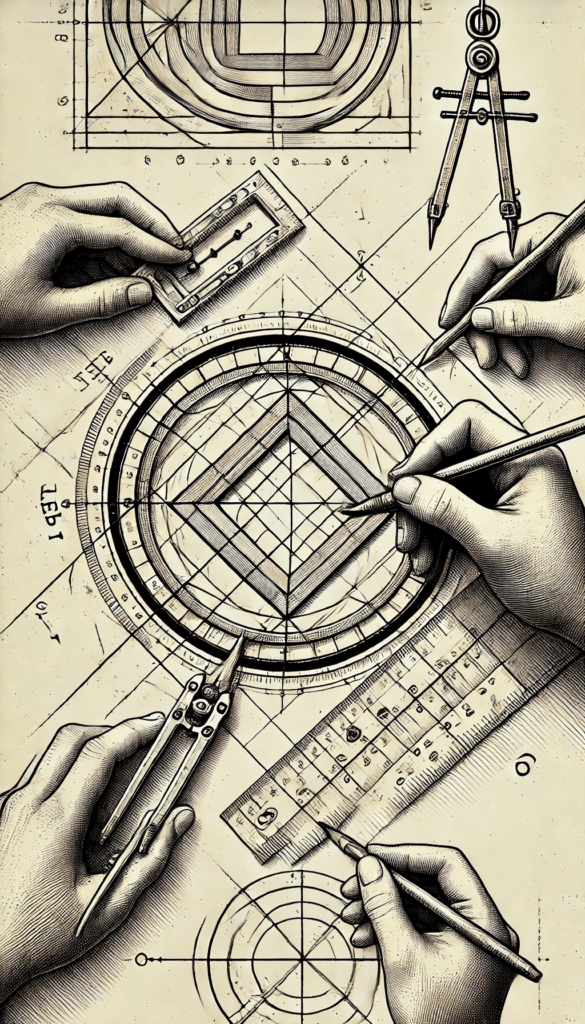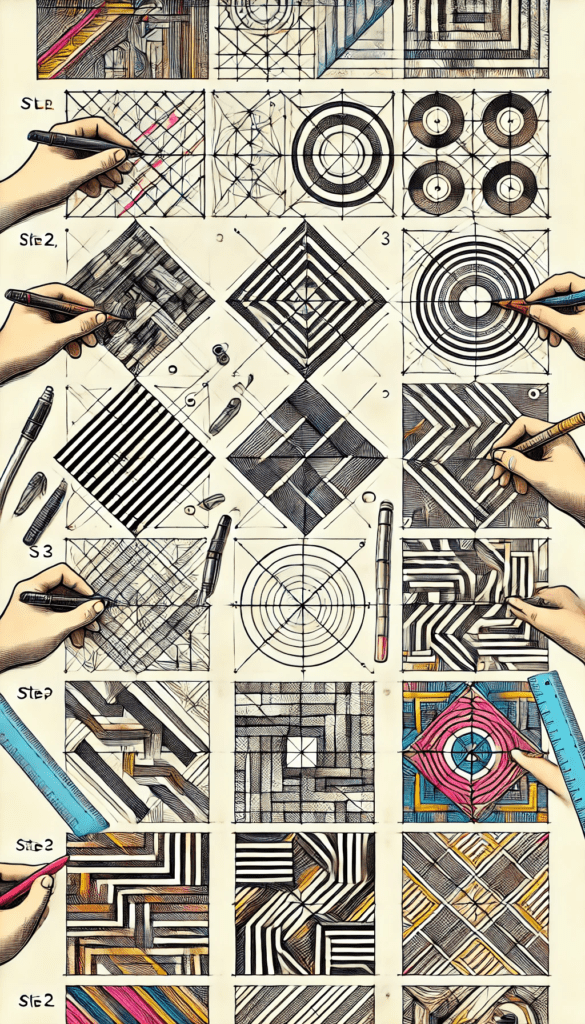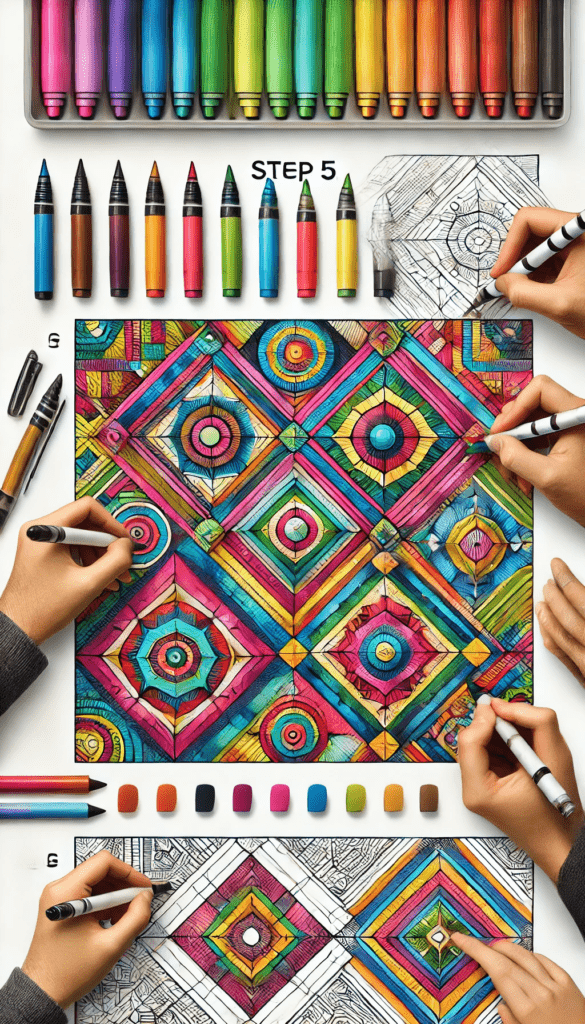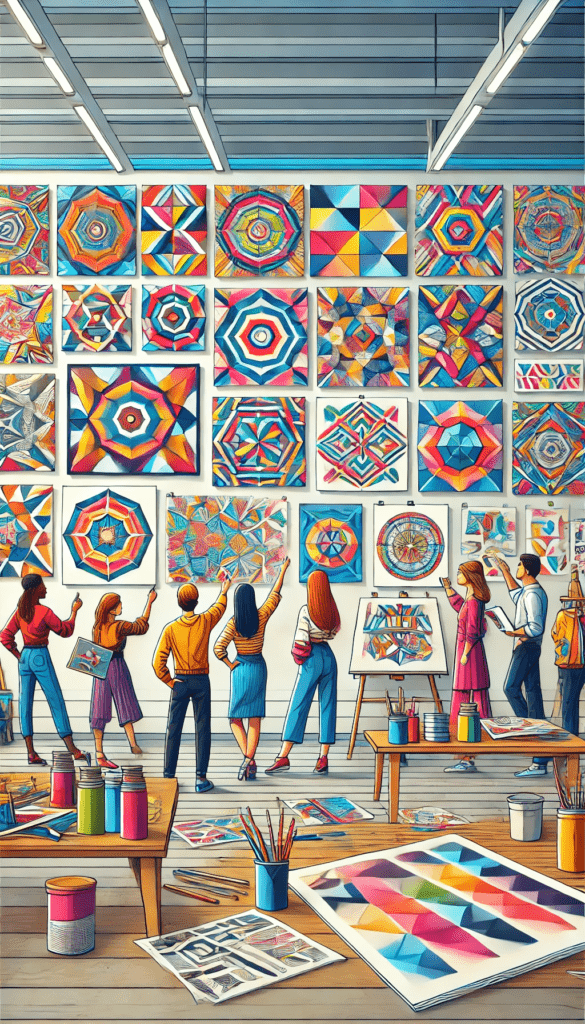Easy Geometric Pattern Drawings: Your Best Guide in 2025
Easy geometric pattern drawings are a fun and simple way to create beautiful art. With just a pencil, ruler, and paper, you can make amazing designs. Easy geometric pattern drawings can be done by anyone, even if you are new to art. Learning how to make easy geometric pattern drawings will help you improve your creativity and focus.

What You Need to Start
To make easy geometric pattern drawings, you need just a few tools:
- Pencil
- Ruler
- Compass
- Eraser
- Paper
- Colored pens or markers (optional)
Gather these items so you can start right away.
Step 1: Draw Basic Shapes
Start with simple shapes like circles, squares, and triangles. These are the building blocks for easy geometric pattern drawings. Use your ruler to make sure the shapes have straight lines.
- Draw a circle with a compass.
- Draw a square inside the circle.
- Divide the square into smaller sections using diagonal lines.
Easy geometric pattern drawings often begin with simple shapes because they are easy to build upon. These shapes can be repeated and adjusted to form more complex patterns.

Step 2: Make Patterns with Lines
Add straight and curved lines inside your shapes. For example:
- Draw diagonal lines inside a square.
- Add curved lines inside a circle.
- Use zigzags to connect points.
These patterns make your drawings more interesting. Many easy geometric pattern drawings use lines to create visual effects. Lines can turn basic shapes into intricate designs. Try experimenting with different line thicknesses for variety.

Step 3: Add Symmetry
Symmetry is very important in easy geometric pattern drawings. Make sure each side of your shape looks the same. You can:
- Fold the paper to check symmetry.
- Use a ruler to measure distances.
Symmetry helps make easy geometric pattern drawings look balanced and professional. Many patterns, like mandalas, rely heavily on symmetry. Practicing symmetry will improve your drawing skills.

Step 4: Create Repeated Patterns
Draw the same shape or design multiple times to create a repeated pattern. You can:
- Draw circles connected by lines.
- Create a grid and fill it with triangles.
- Add spirals or waves for variety.
Repeated patterns are a key feature of easy geometric pattern drawings. They create rhythm and harmony in your artwork. Repetition also helps train your hand for precise movements.

Step 5: Add Colors
Use colored pens or markers to make your designs stand out. Try:
- Filling some areas with bright colors.
- Leaving other areas blank for contrast.
- Mixing warm and cool colors.
Adding colors to easy geometric pattern drawings can make them more vibrant and eye-catching. Experiment with gradients and shading to add depth to your designs. Use color wheels to find combinations that complement each other.

Step 6: Practice and Experiment
Keep practicing to improve your skills. Try different shapes, patterns, and colors. You can even combine patterns to make unique designs.
Easy geometric pattern drawings get better with practice. The more you draw, the more confident you will become. Keep a sketchbook dedicated to geometric patterns so you can track your progress.

FAQs
What are geometric patterns?
Geometric patterns are designs made with shapes like circles, squares, and triangles. They are often repeated and symmetrical, making them visually pleasing and easy to create.
Can kids make easy geometric pattern drawings?
Yes! Kids can easily make these drawings by following simple steps. They can use tools like rulers and compasses to make neat designs, and coloring adds more fun.
What tools do I need for geometric patterns?
You need a pencil, ruler, compass, eraser, and paper. Optional tools include colored pens and markers for adding details and colors to your designs.
How do I make my patterns look even?
Use a ruler and compass to keep your lines straight and shapes even. Measure each side carefully to ensure symmetry and consistency throughout your design.
Can I color my geometric patterns?
Yes! Adding colors makes your patterns look more attractive. You can experiment with gradients, shading, and contrasting colors to make your artwork pop.
How do I start if I am a beginner?
Start with simple shapes like circles and squares. Practice adding lines and patterns inside these shapes. Gradually try more complex designs as you become comfortable.
Are geometric patterns used in art?
Yes, many artists use geometric patterns in their work. They are common in abstract art, architecture, and textiles. Artists often use geometric patterns to create symmetry and rhythm in their designs.
What is symmetry in geometric drawings?
Symmetry means that both sides of the design look the same. It helps create balanced and pleasing patterns. You can use mirrors or fold paper to check for symmetry.
How long does it take to learn geometric patterns?
You can learn the basics in a few hours, but practice will make you better. Regular practice will help you create more complex and detailed patterns over time.
Where can I find more design ideas?
You can find many ideas in art books, online tutorials, and blogs. Websites dedicated to drawing tutorials and design templates can be helpful.
Can I make geometric patterns with a computer?
Yes, many design programs allow you to create geometric patterns digitally. Software like Adobe Illustrator and Canva are popular tools for creating patterns.
What is the easiest geometric shape to start with?
Circles and squares are the easiest shapes to start with. They are simple to draw and can be transformed into more complex patterns with added lines and shapes.
How can I add details to my patterns?
Use dots, lines, and shading to add details. Try layering patterns or adding borders to make your designs more complex and visually appealing.
Can I use geometric patterns for home decor?
Yes, many people use these designs for decorating walls, tiles, and furniture. Geometric patterns are often used in wallpapers, rugs, and pillows.
Are geometric patterns popular in fashion?
Yes, geometric patterns are often used in clothing and accessories. They add style and uniqueness to fabrics, scarves, and jewelry.
What size paper should I use?
You can use any size, but larger paper gives you more space to work with. Bigger sheets are great for detailed designs, while smaller sheets are easier for quick sketches.
Conclusion

Easy geometric pattern drawings are a great way to relax and be creative. They are simple to learn and require only a few tools. Whether you are a beginner or an expert, you can make amazing designs. Keep practicing and exploring new ideas. For more creative projects, check out our Easy DIY Canvas Painting Ideas for Beginners or Cute Doodle Art Ideas for Sketchbooks. For additional tips, visit Art for Kids Hub and Design Bundles to find inspiration and templates.
